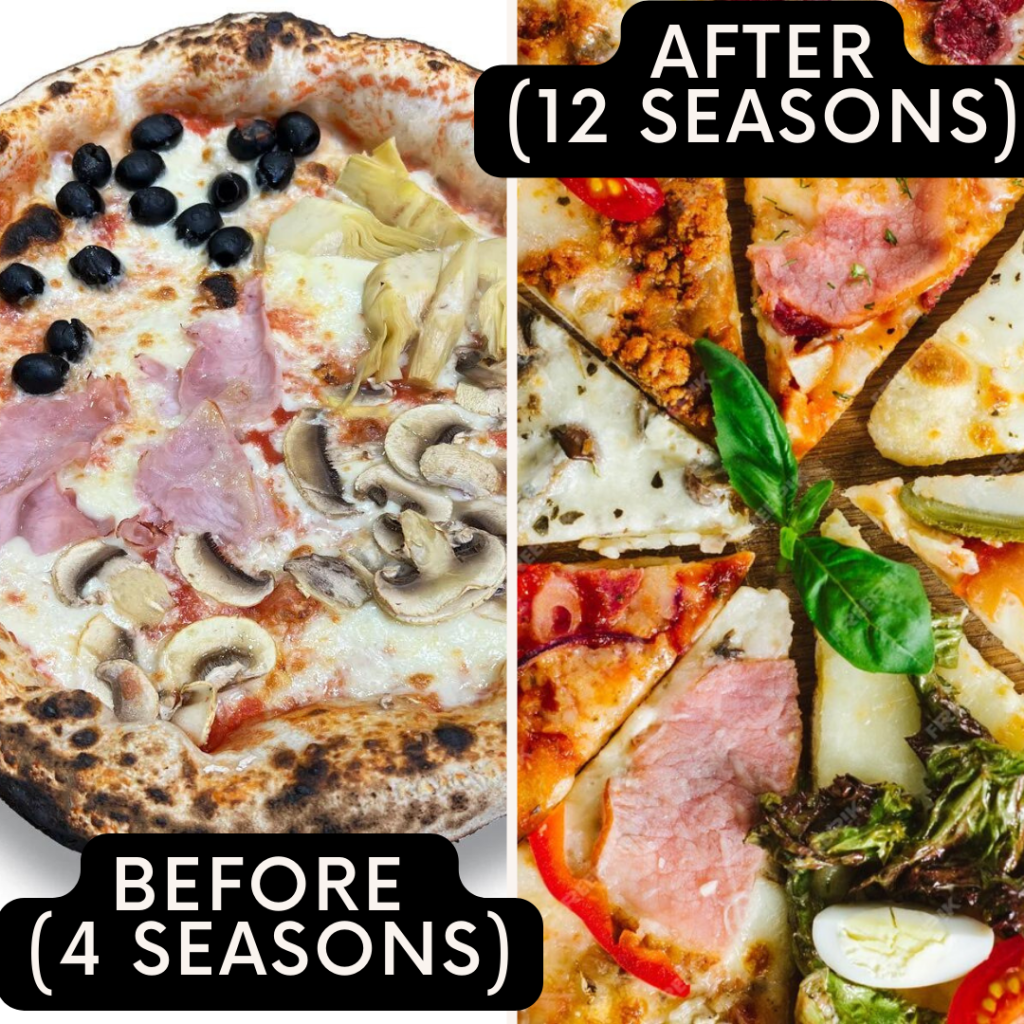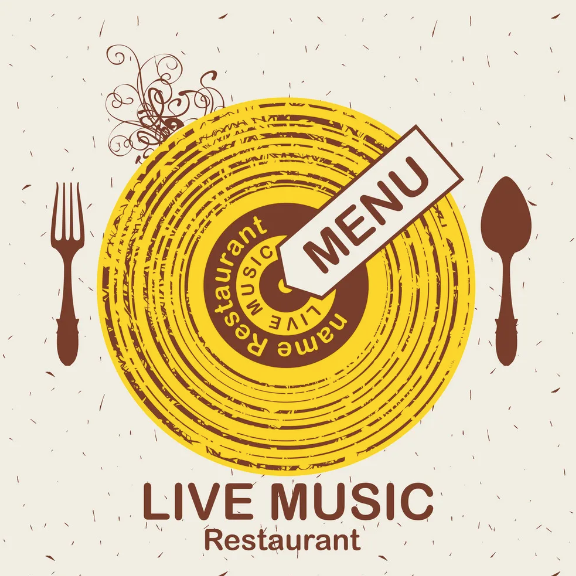PizzaExpress: A Look at the UK’s Original Pizzerias Business Brilliance
Alex Greve
November 9, 2023PizzaExpress: A Look at the UK’s Original Pizzeria Business Brilliance

Let’s take a bite into the savoury strategies that have propelled PizzaExpress to the pinnacle of the pizza industry. An analysis of success, challenges, and pizza perfection throughout the decades, and what the brand can do to fortify its position.
A Taste of Authenticity and Innovation
In the heart of London’s Wardour Street, in 1965, innovative pioneer Peter Boizot embarked on a journey that would change the pizza industry in Britain. Knowing pizza in the UK could be much better, Peter imported an authentic oven from Italy. With it, he brought to life the very first Pizza Express. Setting in motion a culinary revolution that would forever shape the UK’s pizza scene.
Today, some people affectionately call PizzaExpress the ‘OG’ of pizza, and it’s easy to see why. Their lifelong dedication to authenticity extends far beyond their pizzas. From their iconic logo to the meticulously crafted restaurant interiors, authenticity remains at the forefront of the brand.
Recent interior renovations, like the one in Birmingham’s Bullring shopping centre, breathe new life into this commitment. The revamped restaurant continues to tantalise taste buds while immersing diners in the rich tapestry of Italian dining culture.
But PizzaExpress is not just about pizza. One of its core values is to foster deeper connections through food and music. Their strong values echo through their restaurants, creating spaces that inspire genuine human connection.
A stellar reputation
So what has PizzaExpress done to ensure its reputation has remained as one of the UK’s best-loved pizzerias? And what is it that has enabled them to continue to be successful, despite fierce competition and even economic struggles? Today we’re going to take a deeper look at how PizzaExpress has become the pinnacle of the pizza industry. How they could improve to remain one of the most unique pizzerias in the UK. First, let’s take a look at their innovation, menu updates, and brand expansion.
Here we will explore PizzaExpress’s journey of innovation and expansion. From redefining its brand to seasonal menu updates and a successful foray into the retail market, PizzaExpress showcases its commitment to quality, adaptability, and staying ahead in a competitive industry.
A Fresh Take on The PizzaExpress Tradition
PizzaExpress recently underwent a significant transformation, seeking to bring its brand in line with the high-quality dining experience it offers in its restaurants. Somewhat intuitively, I found the name does not necessarily match the fantastic quality of food and interiors. I associate “Express” with fast, high-speed delivery and an impersonal experience. However, they have maintained a reputation as a beacon of culinary excellence.
While loyal customers are well aware of this, newcomers might be in for a pleasant surprise. The brand’s commitment to quality extends far beyond its name. A recent logo refresh illustrates the brand’s heritage, highlighting the ‘1965’ opening date of the inaugural PizzaExpress in Wardour Street.

All packaging now incorporates the distinctive brand asset—the iconic filagree, which PizzaExpress’ consumer research has shown clearly helps customers identify a PizzaExpress product when they’re browsing busy supermarket shelves.
Seasonal Changes and Menu Updates
In a bid to keep the culinary experience exciting, PizzaExpress seasonally updates its menus. On September 20th, they unveiled their autumn menu. Which featured a host of comfort foods, including new dishes, e.g., Broad Bean or Bolognaise Rigatoni, and a unique pork and fennel pizza. The desserts and drinks on offer also received a refresh to complement the new menu.
The Christmas menu, available starting November 21st, also includes new items. Such as Dough Balls in Blankets, special festive pizzas, and the Salted Caramel Espresso Martini and Snowflake Brownie.
However, it’s worth discussing whether these quarterly updates are sufficient to maintain relevance in a crowded market. Could increasing this frequency help them become more in line with their competitors? Do customers want a more varied menu like the monthly menu updates offered at competitor establishments? Could a more diverse calendar of menu updates provide more marketing opportunities, such as becoming a part of conversational topics on, e.g., social media?
Bringing the Pizzaiolo Experience Home
PizzaExpress first launched retail products designed specifically for the frozen market in 2016. They were available exclusively through frozen food retailer Iceland. I can see the main reasons driving it were brand extension and possibly a way to drive footfall to their restaurants. Restaurant visits lead to larger orders, including multiple courses, and the opportunity to purchase an alcoholic beverage alongside a meal. This strategy aligns with the brand’s goal to offer a holistic Pizza Express experience.
They have recently made a substantial move in narrowing the gap between their restaurant and retail offers with the most extensive revamp of their chilled pizza range to date. This transformation involved enhancements to taste in their ‘Icons’ series, the introduction of a more upscale tier known as ‘Restaurant Favourites,’ and a refresh in packaging. The goal was to provide customers with clearer choices and better quality, using premium ingredients that closely mirror their restaurant recipes.

What I really like is how PizzaExpress Club members get to enjoy rewards in an omnichannel fashion. Not only in restaurants but also in-app, and even purchases of frozen pizzas through the retail channel result in loyalty points earned. Also, Club members, when dining in, can manage their ‘journey’ from within the app, such as reviewing their bill, by checking into the table they are seated at. These features are, I believe, unique and make their loyalty programme stand out.
Here we’ve witnessed PizzaExpress’s transformative journey and commitment to enhancing its brand, menu, and retail offerings. Now let’s take a look at their marketing opportunities, music infusion, and how they implement dayparting. Here we’ll discuss the creative strategies that PizzaExpress has already employed to connect with its customers. Including marketing innovations and the infusion of music into the dining experience. We will also discuss how they could improve on these to further enhance their marketing and customer experience.
Local Marketing Opportunities and Menu Innovations
Local marketing strategies could be an interesting marketing opportunity for PizzaExpress. The potential to tailor menus to specific locations while incorporating unique flavours, cultures, and opportunities is an enticing prospect.
Restaurants would have the opportunity to be more location-specific by featuring freshly caught local seafood, for example. Or a branch nestled in an agricultural region could offer locally grown produce, making each visit a distinct experience.
Embracing local culture and events is another opportunity, with the option of offering a menu that is specifically for locals in popular holiday destinations. This could set the stage for increased footfall during low tourist seasons. I also imagine that seasonal promotions coinciding with local festivals could further help foster a sense of community.
Key points:
- Tailor menus to specific locations
- Offer location-specific menu items
- Offer a “locals” menu during low-tourist seasons
Harmonising Food with Music
PizzaExpress’s commitment to creating genuine human connections through food and music extends far beyond ambience. Their dedication to the musical arts has not only become a core value but also a reputation-builder. The delightful marriage of pizza and jazz resonates throughout their venues, which already offer an authentic and enriching dining experience. But is there also an opportunity to incorporate music into their menus?
Could we jazz up some menu items with an interesting musical twist? Perhaps turning the classic “Pepperoni” into a “Spicy Sax Supreme” or “Hawaiian” could take on the rhythmic moniker of “Tropical Tango”. This could create a memorable dining experience, highlighting the authentic bond between food and music throughout the entirety of PizzaExpress’ branding, including in its menus.

Imagery could also play a role here. While we already have the updated versions of the painted-style ingredients, could we further elevate this look by incorporating artistic depictions of musicians in full swing? Instruments that double as utensils, and pizza slices shaped like musical notes?

Key Points:
- Include musical themes in imagery alongside the fresh ingredients
- Customise some menu items with a musical twist
- Highlight the bond between food and music throughout the branding
Taste Timed to Perfection: could PizzaExpress benefit from Dayparting?
Dayparting is a strategic approach to cater to different tastes and preferences at specific times of the day. PizzaExpress has always understood the importance of timing and already offers various menu times. E.g. the lunch menu is available Monday through Friday until 4 p.m. but excludes weekends, bank holidays, and specific dates.
I also found evidence they are incorporating slight differentials in their menu times on Fridays and Saturdays. This could be because these two evenings are often associated with celebration and indulgence and therefore attract more footfall. This is noticed on their Uber Eats menu, where the Woking-Goldsworth Road menu suggests a main menu from 4 p.m. until 9:45 p.m. on weekdays but from 4 p.m. until 10:45 p.m. on Friday’s and Saturdays.

To further utilise the marketing opportunities of dayparting, PizzaExpress could consider extending this approach to other times of the day. They could have unique early dinner specials specifically curated for families or those seeking a more relaxed dining experience. This approach would not only make the dining experience more relevant to the time of day but also cater to a wider spectrum of customers.
The benefits of further dayparting could enable PizzaExpress to better anticipate and meet the needs of their customers. It can boost customer loyalty and encourage repeat visits. Diners will come to associate PizzaExpress with not just delicious food but also thoughtful, time-specific dinner opportunities.
Kep Points:
- Consider introducing dayparting to other times of the day, such as an early diners special
- Utilising more dayparting could make the dinner experience more relevant and accessible
- Dayparting could help meet more customers’ needs and enhance satisfaction
While PizzaExpress already utilises various marketing opportunities, there is still more they could do to further elevate their future campaigns. From tailoring menus to specific locations, embracing local culture, to incorporating their musical flare into their branding and exploring dayparting for a more dynamic dining experience. These strategies could help cement their commitment to innovation and customer engagement.
Next, let’s conduct a comprehensive analysis focusing on their current Strengths, Weaknesses, and Threats. We’ll look at the aspects in which they’re doing well, areas that could benefit from some improvement, and the potential challenges they may face in the competitive restaurant industry.
Strengths: Anchoring Authenticity and Innovation
- Their authenticity and commitment to authentic Italian heritage is evident in all aspects of their brand, from their famous dough balls to their wood-fired oven pizzas. Their rich Italian roots are a testament to the exceptional quality and taste that have been maintained over the years.

- Despite high competition from its high street competitors, they have remained a key player in the pizza industry. Their innovative menu caters to a diverse customer base with a multitude of preferences including vegan, gluten-free options, and traditional pizza classics. PizzaExpress has an adaptability that ensures no one is left out of their menu choices.
- They pride themselves on not just offering delicious pizza dinners but an overall unique dining experience that infuses music with food. The family-friendly atmosphere in their restaurants creates a warm and welcoming environment, turning a simple meal into a memorable occasion for customers of all ages. Their ability to seamlessly blend great food with an inviting atmosphere is undoubtedly a strength that sets them apart from other pizzeria competitors.
- Loyalty programmes have become an integral part of the dining experience, and PizzaExpress has mastered this aspect well. Their rewards programme has garnered a loyal following, offering discounts, exclusive deals, and offers that keep customers coming back for more. As I mentioned earlier, the fact that their loyalty programme is truly omnichannel, even earning rewards on supermarket purchases, is fantastic. This fosters customer retention and brand loyalty, a clear testament to their strengths in customer relations.
- With a stellar reputation for delivering quality pizzas (now also through PizzaExpress Delivers with UberEats as their fleet provider) and authentic pasta dishes, they have solidified their position as a go-to destination for authentic Italian cuisine. A unique selling point, PizzaExpress LIVE, adds an extra layer of appeal, seamlessly blending music with great food. This innovative concept not only sets them apart but also diversifies their offerings, further enhancing their strengths in the industry.
Weaknesses: Balancing Price and Competition
- Their price point has been a double-edged sword. While the quality unquestionably justifies the cost, PizzaExpress is often perceived as being on the more expensive side for a casual pizza dinner. This can deter price-sensitive customers. Striking a balance between maintaining quality and addressing affordability could be a key challenge.
- In an increasingly crowded pizza market, competition remains strong. The UK’s pizza market is fiercely competitive, with new players and trendy (often cheaper) alternatives continually emerging. Staying ahead of the curve and continuously innovating to meet evolving consumer preferences could be challenging.
- Another aspect where PizzaExpress could face limitations is its delivery locations. Unlike some competitors, their delivery location range is somewhat limited. This could inconvenience customers who want the luxury of having their favourite pizza delivered to their doorstep. Expanding the delivery location range could open up new avenues for customer acquisition.
- For the products they already have in retail, another potential weakness lies in the packaging and sourcing. PizzaExpress could explore eco-friendly packaging and sourcing, appealing to the eco-conscious crowd while addressing sustainability concerns.
- While PizzaExpress is a household name in the UK and has 100 restaurants overseas, there’s still further opportunity for international expansion that remains untapped. Seizing this opportunity could further solidify their status as a beloved pizza brand worldwide. Expanding their footprint beyond the UK and current overseas locations could potentially mitigate the challenges posed by fierce local competition.
Threats: Navigating Economic Fluctuations and Changing Consumer Preferences
- Economic downturns or moments of national crisis (such as the COVID-19 pandemic) can dampen customers’ willingness to dine out or indulge in takeout. Pizza Express must remain resilient during such periods, continuously assessing customer sentiment and adjusting pricing and promotions accordingly.
- As health trends continue to reshape consumer choices, a brand primarily associated with indulgent pizzas faces a challenge. To address this, they can adopt a more comprehensive approach by offering healthier, more nutritious choices on their menu. Balancing their existing offerings with a variety of options can help attract health-conscious customers while maintaining their loyal pizza enthusiasts.
- They must continually innovate to keep up with evolving preferences. This includes offering a more diverse calendar of menu updates to match their competitors and meet the growing demand for variety. A strategic approach that aligns with changing consumer tastes can mitigate the risk of falling out of favour with an ever-evolving market.
Conclusion
PizzaExpress stands as a true pioneer in the UK’s pizza industry. With a rich history of authenticity, innovation, and a commitment to excellence, they have propelled themselves to the forefront of the market. From their humble beginnings on Wardour Street to their recent brand transformation, PizzaExpress has maintained a strong focus on delivering high-quality food and an inviting dining experience.
Their dedication to innovation, seasonal menu updates, and forays into the retail market have showcased their adaptability and commitment to quality. Along with their recent brand refresh, PizzaExpress remains a symbol of culinary excellence.
To further enhance their success, PizzaExpress could explore local marketing opportunities, further infuse music into their menus and branding, and implement dayparting to cater to a wider range of customers. These strategies could help them maintain their commitment to innovation and customer engagement.
Further Improvements
They could further elevate the dining experience by infusing the brand into the menus, including its connections to jazz music. A music-inspired menu featuring uniquely inspired menu items and extending the musical theme to the menu’s visual presentation could all help strengthen the bond between food and music throughout their branding.
To secure new customer acquisitions, PizzaExpress could certainly try implementing more local flavour into their menus. By offering local specials, using fresh, local ingredients, and further expanding their delivery locations. This could allow them to be more accessible to a wider audience, catering to a more diverse range of customers’ tastes and expectations.
By addressing its identified weaknesses, capitalising on local marketing opportunities, and effectively managing current and future threats, PizzaExpress can further strengthen its position in the UK pizza market and maintain its growth and increasing popularity.
Agile menu management, like that offered at Prestau, can help with all of these suggestions. From rapidly authoring menus, auditing menus 24/7, perfecting menus through A/B testing, and monitoring competitor offers all through one platform, Prestau has everything you need to make menus more topical. For a free consultation or to request a demo, get in touch with us today to see how we can help improve your menus tomorrow.